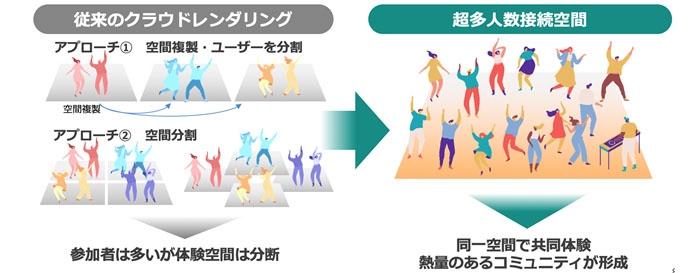毎年生産される1億2千万トン以上のコーンスターチのうち、15%近くが廃棄されるか、鶏などの動物に与えられています。フランシスコ・ビラプラナは、この “巨大な副産物” から栄養価を生み出す方法を開発しました。 Of the more than 120 million metric tons of corn starch produced each year, nearly 15 percent is discarded or fed to chickens and other animals. Francisco Vilaplana has developed a method to generate nutritional value from what he describes as “a huge sidestream.”
2023-01-31 スウェーデン王国・王立工科大学(KTH)
◆トウモロコシの皮には、強力な抗酸化物質であるフェルラ酸が豊富に含まれている。残念ながら、この抗炎症剤は不溶性の物質マトリックスに閉じ込められており、人間が消化することはできない。しかし、これまではそうではなかった。
◆KTH王立工科大学の研究者たちは、この不溶性マトリックスから可溶性フェルラ酸を豊富に含む食物繊維を取り出す方法を報告し、それを腸まで送達するハイドロゲルを開発して、細胞の酸化を防ぎ腸の健康を改善することができるようになりました。
◆コーンブランは不溶性のため、コーンスターチ製造の副産物として価値が低く、他の方法では廃棄されるか、動物飼料として売り払われます。しかし、研究者たちはそれを無駄にすることなく、亜臨界水抽出という方法を用いて、フェルラ酸を含むふすまの水溶性食物繊維部分を分離したのです。
◆KTH王立工科大学の糖質科学部門准教授Francisco Vilaplana氏によると、次のステップは、この水溶性フェルラ酸を豊富に含む食物繊維部分を天然酵素(ラッカーゼとペルオキシダーゼ)で架橋してハイドロゲルを作成することであるとのこと。このハイドロゲルは、腸の健康を保つためのプレバイオティクスとして消化されるほか、酸化ストレスに対抗して治癒に寄与することから、傷の治療薬として使用することも可能だという。
◆この方法は、科学雑誌『Green Chemistry』に掲載されました。
◆コーンスターチの世界市場は1億2千万トン以上と推定され、2026年には1億6千万トンまで増加すると予想されています。コーンスターチの加工では、穀粒の15パーセントが繊維(コーンブラン)として廃棄されると、Vilaplanaは言う。「これは大きな産業的な副流作物です。
<関連情報>
- https://www.kth.se/en/om/nyheter/centrala-nyheter/method-extracts-antioxidant-nutrients-from-corn-processing-waste-1.1224769
- https://pubs.rsc.org/en/content/articlelanding/2022/GC/D2GC03331C
トウモロコシ繊維由来のフェルロイル化アラビノキシランの酵素架橋による細胞酸化ストレス保護効果を有するハイドロゲル Hydrogels with protective effects against cellular oxidative stress via enzymatic crosslinking of feruloylated arabinoxylan from corn fibre
Secil Yilmaz-Turan, Kun Jiang, Patricia Lopez-Sanchez, Amparo Jiménez-Quero, Thomas Crouzier, Tomás S. Plivelic and Francisco Vilaplana
Green Chemistry Published:07 Nov 2022
DOI:https://doi.org/10.1039/D2GC03331C

Abstract
Biocatalytical upgrading of side streams from agricultural biomass into multifunctional materials constitutes a very attractive option to increase the circularity of food and material systems. We propose the design of radical scavenging hydrogels with mechanical integrity and protective effects against reactive oxygen species by enzymatic crosslinking of arabinoxylans (AX) with high ferulic acid content extracted from corn fibre using subcritical water. We have compared the influence of two enzymatic systems, laccase/O2 and peroxidase/H2O2, on the biochemical structure, multiscale assembly, physicochemical properties, and radical scavenging activity of the polysaccharide hydrogels. Peroxidase crosslinking results in instant hydrogel formation, whereas laccase shows slower crosslinking kinetics, resulting in a more elastic gel network. Characterization by size exclusion chromatography, small angle X-ray scattering, and microscopy revealed structural differences in the network organization of the hydrogels produced by the two enzymes. Laccase crosslinking leads to smaller polymeric aggregates, promoting their progressive organization in network clusters that impact the overall ultrastructure. Conversely, the fast crosslinking induced by peroxidase results in higher porosity and forms larger and potentially more heterogeneous aggregates, which seem to hinder their subsequent association in clusters. Both AX hydrogels exhibit adequate biocompatibility and protective effects against in vitro cellular oxidative stress compared to an alginate reference. This constitutes a proof of concept of the potential application of radical scavenging hydrogels from agricultural side streams for biomedical and nutritional applications in wound healing, cellular repair and targeted delivery.



